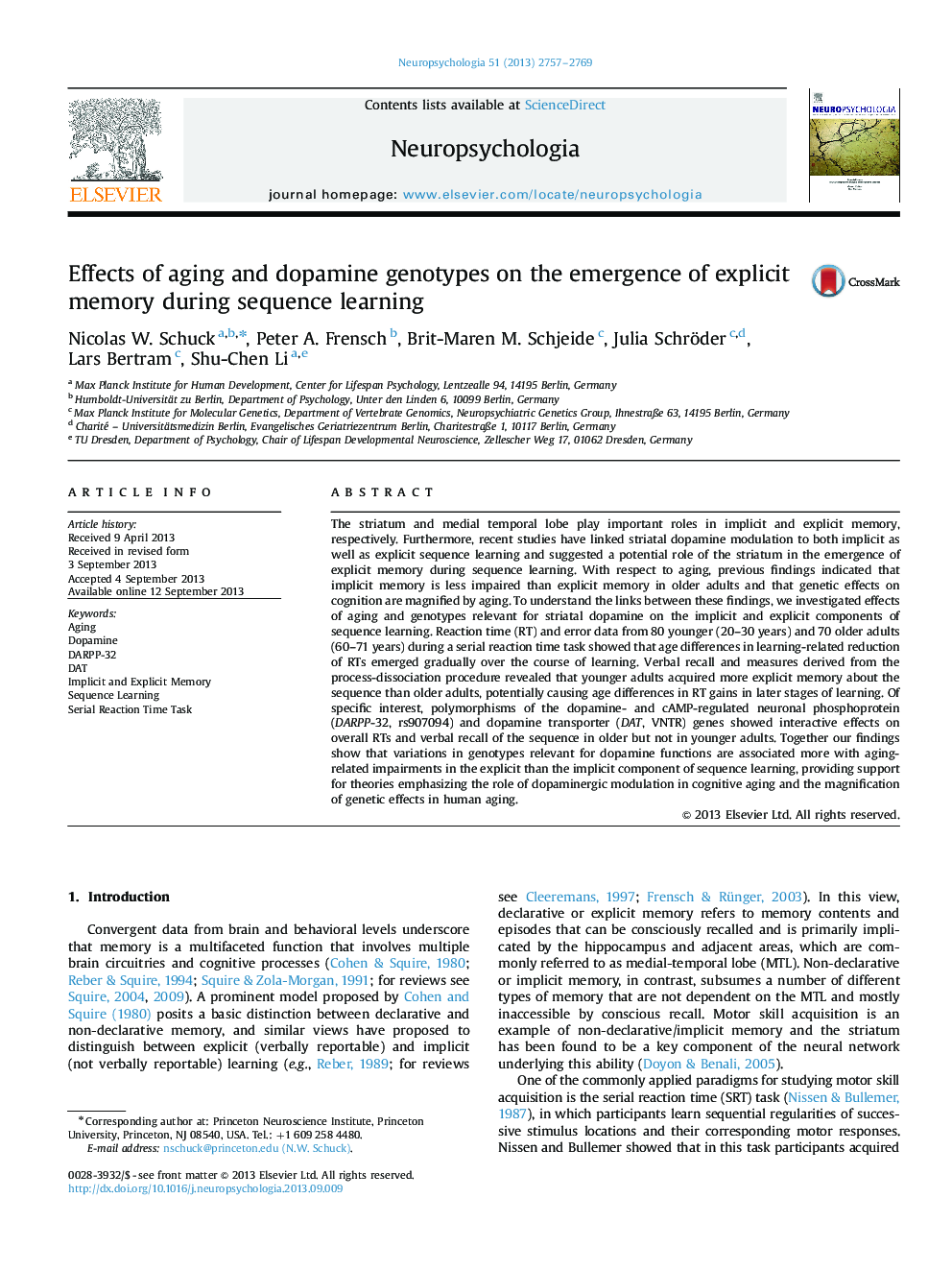| Article ID | Journal | Published Year | Pages | File Type |
|---|---|---|---|---|
| 10464735 | Neuropsychologia | 2013 | 13 Pages |
Abstract
The striatum and medial temporal lobe play important roles in implicit and explicit memory, respectively. Furthermore, recent studies have linked striatal dopamine modulation to both implicit as well as explicit sequence learning and suggested a potential role of the striatum in the emergence of explicit memory during sequence learning. With respect to aging, previous findings indicated that implicit memory is less impaired than explicit memory in older adults and that genetic effects on cognition are magnified by aging. To understand the links between these findings, we investigated effects of aging and genotypes relevant for striatal dopamine on the implicit and explicit components of sequence learning. Reaction time (RT) and error data from 80 younger (20-30 years) and 70 older adults (60-71 years) during a serial reaction time task showed that age differences in learning-related reduction of RTs emerged gradually over the course of learning. Verbal recall and measures derived from the process-dissociation procedure revealed that younger adults acquired more explicit memory about the sequence than older adults, potentially causing age differences in RT gains in later stages of learning. Of specific interest, polymorphisms of the dopamine- and cAMP-regulated neuronal phosphoprotein (DARPP-32, rs907094) and dopamine transporter (DAT, VNTR) genes showed interactive effects on overall RTs and verbal recall of the sequence in older but not in younger adults. Together our findings show that variations in genotypes relevant for dopamine functions are associated more with aging-related impairments in the explicit than the implicit component of sequence learning, providing support for theories emphasizing the role of dopaminergic modulation in cognitive aging and the magnification of genetic effects in human aging.
Keywords
Related Topics
Life Sciences
Neuroscience
Behavioral Neuroscience
Authors
Nicolas W. Schuck, Peter A. Frensch, Brit-Maren M. Schjeide, Julia Schröder, Lars Bertram, Shu-Chen Li,
